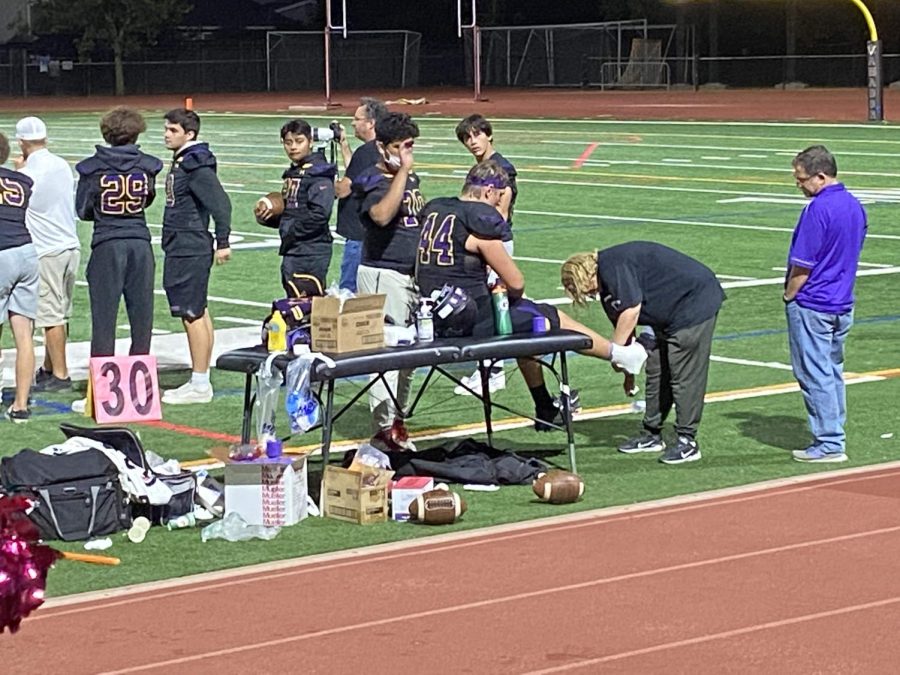Behind the scenes with concussion and injury protocols at Amador
Amador Athletic Trainer Diana Hasenpflug treats a player’s injury during a game against Clayton Valley.
October 19, 2022
On Sept. 30, NFL player Tua Tagovailoa was put back into play after sustaining a suspected concussion, only to be more severely injured. The incident has motivated many to reassess concussion protocols, and better protect the players.
“I’ve learned that concussions have a lifetime effect on somebody’s memory, how they remember things, and how they function on a daily basis,” said Diana Hasenpflug, AV Athletic Trainer and Sports Medicine Teacher.
A concussion is classified as a traumatic head injury that occurs when the brain is shaken due to a heavy blow. The AV sports medical team is always prepared at sporting events to treat this dangerous injury in case of an emergency.
“When there’s a potential injury, we ask players a couple of questions like what did you eat for dinner or breakfast? And more short term and long term memory questions. Then we do some motor testing, and stability testing,” said Aryaveer Dua (‘23), member of AV Sports Medicine Team.
Once a concussed athlete is 24 hour asymptomatic, they retake the baseline function test to compare their results with normal brain function. They will use these results to be cleared for sports by a doctor. When all these steps have been completed, the athlete is allowed to re-acclimate with the team, progressing from moderate cardio to contactless practice.
“If someone gets hurt on the field, the medics will be waiting at the sideline as soon as they get there to check them. When I was injured in the past I just went to the sideline and Mrs. Hasenpflug was already there to help me out,” said Edwin Carreon (23’), AV football player.
Concussion treatment protocol was nationally outlined in 2009 when the Return to Play guidelines were mandated by the US government. There have also been recent efforts updating athlete’s safety techniques and equipment to prevent concussions in the first place.
“We’ve updated equipment like helmet’s padding, making sure that all the pads and equipment are properly fitted, we’ve worked on strengthening programs of neck muscles and shoulder to help support the head more if the kid gets hit on the head or whipped to the ground,” said Hasenpflug.
In general, these protocols have reduced the number of concussions significantly and helped many students recover safely. However, as seen with Tua Tagovailoa, lax enforcement of these rules can lead to further danger for athletes.






